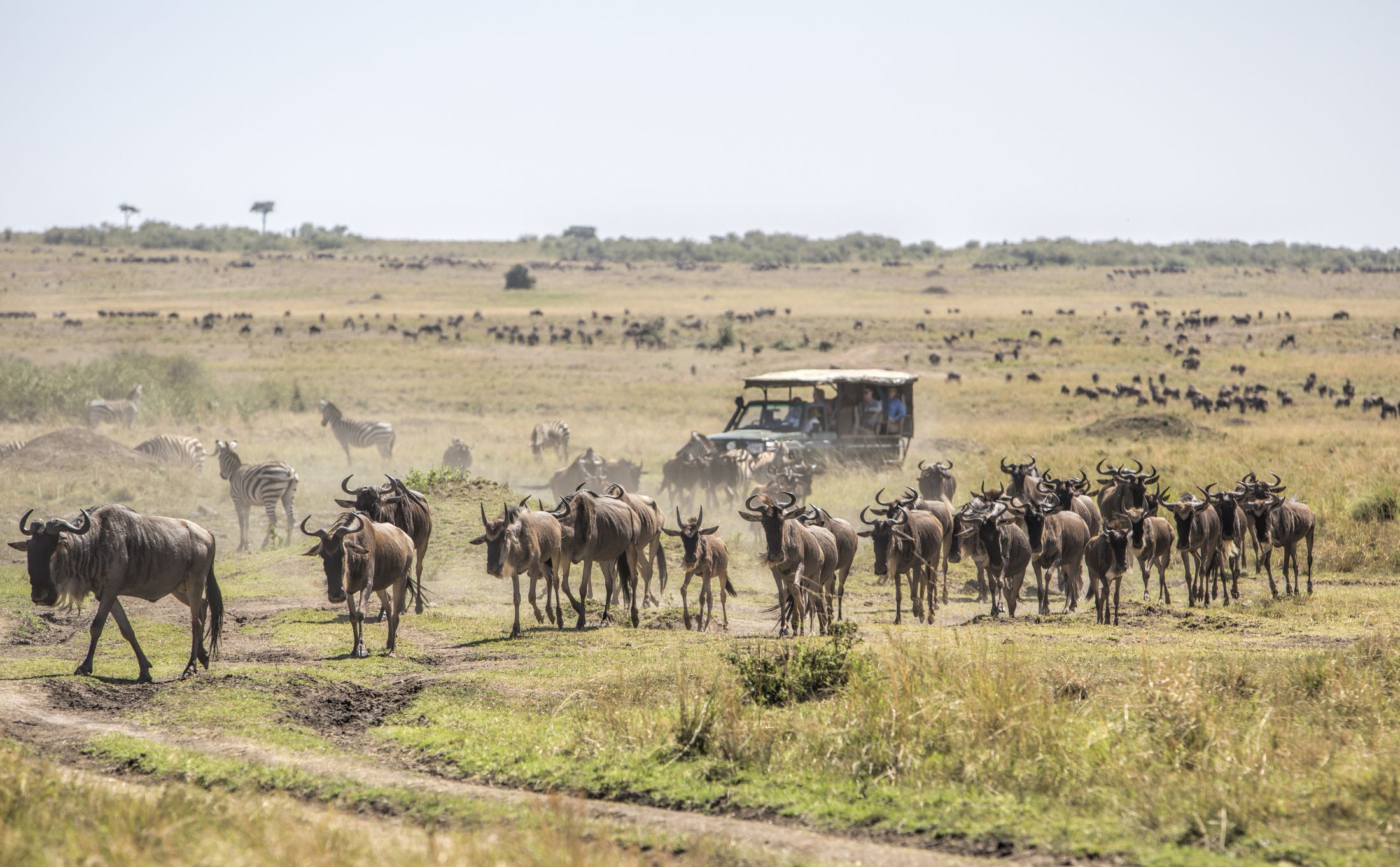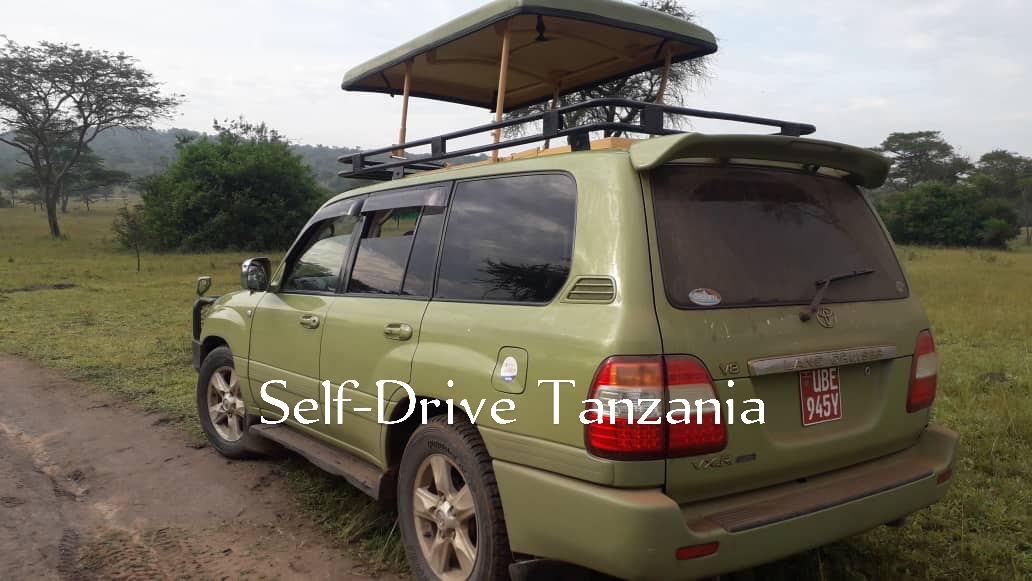Ngorongoro Conservation Area was named after the Ngorongoro Crater a vast volcanic caldera and is located in between the Serengeti National Park and Lake Manyara National Park. The Conservation Area is managed by the Ngorongoro Conservation Area Authority.
The Conservation Area consists of the Ngorongoro Crater which is the most prominent safari attraction here as it inhabits various wildlife animals that take water from the lake.
Ngorongoro Crater
The Ngorongoro Crater lies about 60 kms North west of Lake Manyara, 145 kms South West of the Serengeti, 190 kms West of Arusha with a crater that was once an infant volcano that collapsed forming a caldera of 18 kms and 1 km deep.
The Crater attracts various birds, wildlife i.e wildebeest, Lion, Leopard and Buffalo, Olive baboon, Blue Monkeys, bush babies, rhino, elephant, cheetah, zebra and many species of antelope.
The Ngorongoro Crater stands 7,600 ft high at the rim with a base floor of about 2,000 ft under a thick canopy of lichen-draped tropical forest usually covered with mist.
The roads in and out of the crater give you unforgettable adventures and require you to transfer using 4×4/ 4 WDs that can handle the terrain as you transfer from one point to another. En-route, you watch the Masai take their herds into the crater for grass and water an adventure very remarkable.
Popular Safaris in Tanzania
Things to do in Ngorongoro Conservation Area
Game Drives and Wildlife watching
Ngorongoro Crater is perfect for all travelers on Game Drive in a 4×4 wheel vehicle and these occur in two sessions i.e. Morning and afternoon. By 4:30 pm, all vehicles Must be out of the Crater, and while on your drive, watch various wildlife animals, birds, lakes, lush forests, and the green Savannah vegetation.
Photographic Safari
Ngorongoro Crater is perfect for all travelers interested in taking remarkable wildlife Safari Photos of birds, lakes, and savannah vegetation as well as the Masai local people.
Masai Cultural Encounter
The local Masai People are an exceptional safari attraction to explore/ visit while in the Crater.
They are allowed to graze their animals around the edges of the crater as well as take the animals to drink from it during the dry months of the year. Arrangements can be made to visit the villages/ homesteads to learn about their way of life, traditions, and customs.
Enjoy Picnic Lunch
The Ngorongoro Crater is ideal for all travelers interested in having a delicious picnic lunch in the African wilderness watching wildlife wander around their natural habitat.
Visit Tanzania’s Last Bushmen
The Bushmen in the park that lived here were driven out by the Masai-Hadzabe Tribe, despite the fact that some remained behind and these are visited by travelers interested in learning more about the local Bushmen and how they have survived since the ancient days.
Nature and Crater View Walks
Ngorongoro Crater is ideal for travelers interested in nature and crater view walks as these take you along the rims of the crater with the western section offering you exceptional views of the woodlands, acacia forests, and open grasslands. On your guided walk, you will watch the Masai people too.
Bird Watching
Bird watching is incredible in the Ngorongoro Crater as you watch various bird species like the African cytrill sights, forest buzzard, golden-winged sunbirds, white eyes slaty, flamingos, Kori bustards, and crowned cranes, etc.
Other Activities to do around the Crater include; Hot Air Ballooning, Hiking to the summit of the Gol Mountains, Visit Olduvai Gorge, Visit the Empakaai Crater,
How to Get to Ngorongoro Conservation Area
Ngorongoro Conservation Area can be accessed by use of a 4×4 fleet as the Conservation area is situated along the way on a 3 hours’ drive from Arusha the starting point for all Safaris in Tanzania.
By Road to the Crater
On arrival in Arusha Town, you are picked up by a driver-guide who transfers you in a 4×4 vehicle via Karatu Town then to the Ngorongoro Conservation Area via Lake Manyara National Park.
By Air to the Crater
The Crater can be accessed by use of Air where you board a flight that drops you at Kilimanjaro International Airport or Arusha Airport where you are picked up by a driver-guide who transfers you to the Ngorongoro Conservation Area.
Domestic flights to Ngorongoro Conservation Area
Ngorongoro Conservation Area can be accessed by use of domestic flights too and these include; Air Tanzania, Precision Air, Regional Air, ZanAir, Safari Air Link, or Coastal Aviation.
Best Time to Visit the Ngorongoro Conservation Area
Ngorongoro Conservation Area can be visited any time around the year travelers although the Best time to visit is during the rainy season in the months of April to May since there are far fewer visitors and the crater is wonderfully lush and green compared to the dusty dry-season landscape in the months of September to December and January.






